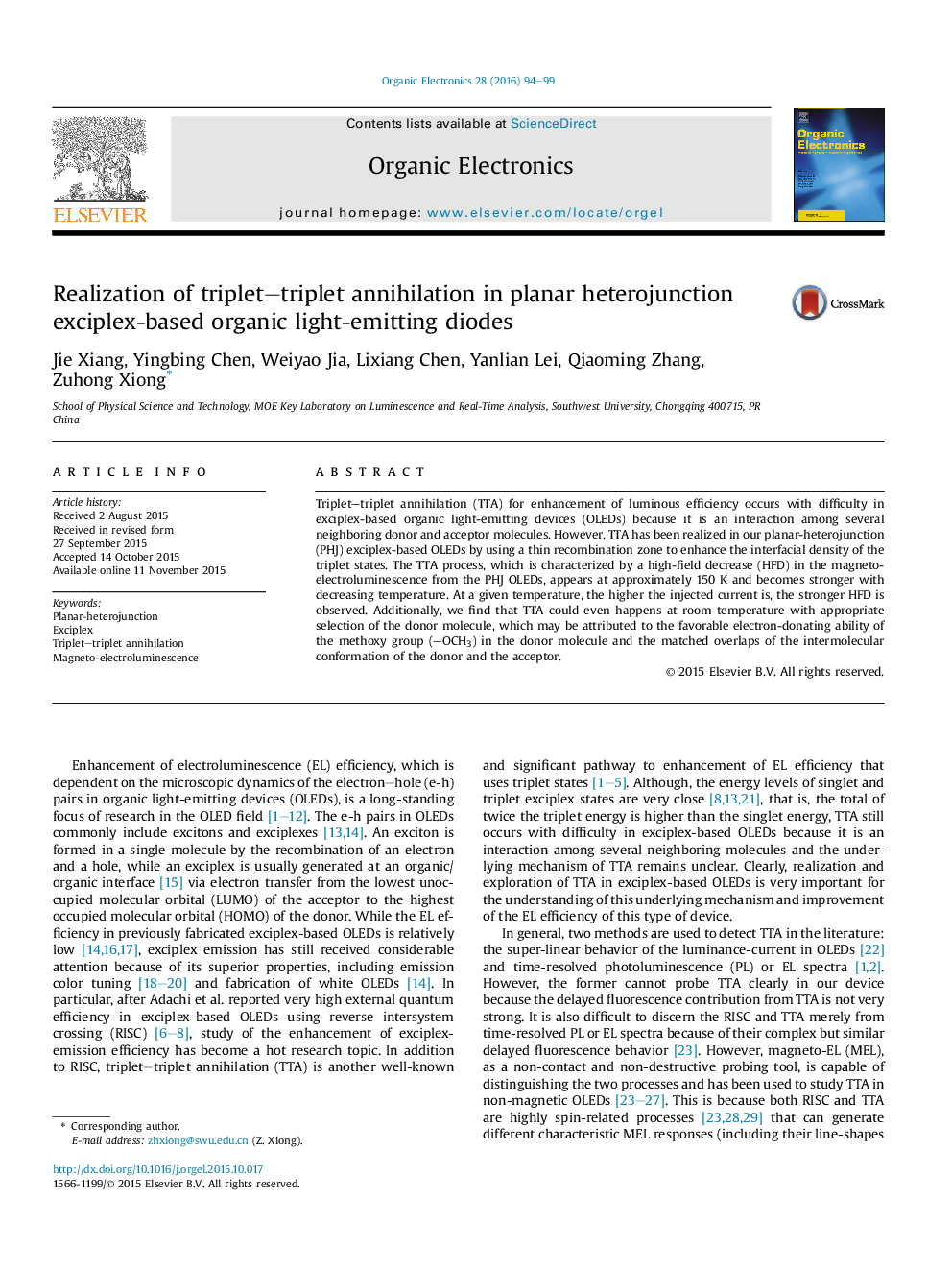| Article ID | Journal | Published Year | Pages | File Type |
|---|---|---|---|---|
| 1267119 | Organic Electronics | 2016 | 6 Pages |
•We realized a thin recombination zone for electrons and holes by using planar-heterojunction device structure.•TTA has been realized in our planar-heterojunction exciplex-based OLEDs by using a thin recombination zone to enhance the interfacial density of the triplet states.•TTA could even happens at room temperature with appropriate donor material of MeO-TPD that possess the favorable electron-donating ability.
Triplet–triplet annihilation (TTA) for enhancement of luminous efficiency occurs with difficulty in exciplex-based organic light-emitting devices (OLEDs) because it is an interaction among several neighboring donor and acceptor molecules. However, TTA has been realized in our planar-heterojunction (PHJ) exciplex-based OLEDs by using a thin recombination zone to enhance the interfacial density of the triplet states. The TTA process, which is characterized by a high-field decrease (HFD) in the magneto-electroluminescence from the PHJ OLEDs, appears at approximately 150 K and becomes stronger with decreasing temperature. At a given temperature, the higher the injected current is, the stronger HFD is observed. Additionally, we find that TTA could even happens at room temperature with appropriate selection of the donor molecule, which may be attributed to the favorable electron-donating ability of the methoxy group (–OCH3) in the donor molecule and the matched overlaps of the intermolecular conformation of the donor and the acceptor.
Graphical abstractFigure optionsDownload full-size imageDownload as PowerPoint slide
